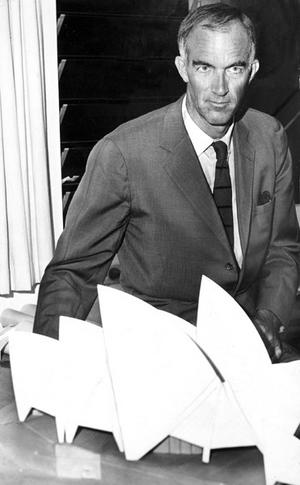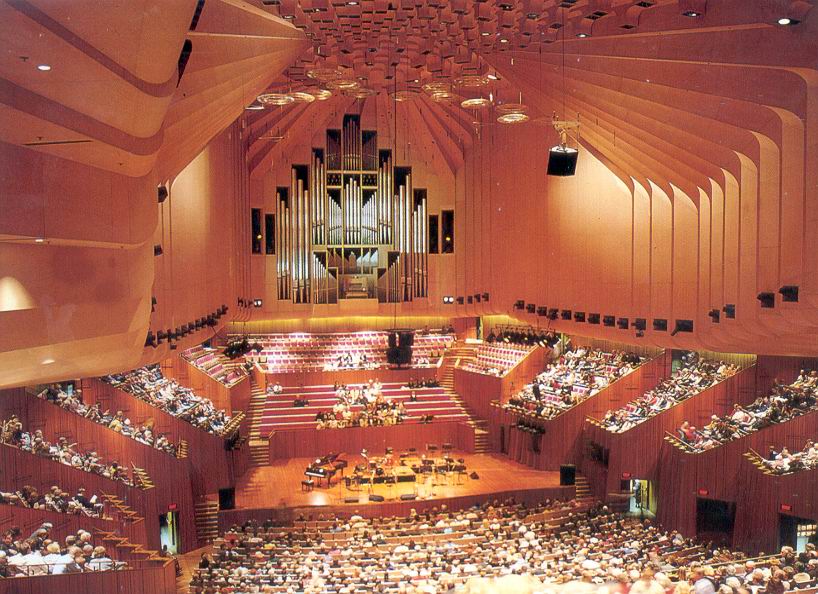Breaking architectural news this morning is that architect Jorn Utzon has died, aged 90.
BBC has full coverage here, although I suspect that most of you already know the story: Utzon won the competition for the Sydney Opera House, walked out part way through construction, and never went back to Australia. The Opera House (competition 1957, completion 1973) is now happily described as an icon for Sydney, in one of those possibly few correct applications of the word. It’s a World Heritage site, it’s one of the seven Wonders of the Modern World, it’s a fantastic piece of Architecture, and it’s a monument to the perseverance of the architect and the engineer. Yes, it is also a monument to Ove Arup, as it was the Opera House project that helped push Arup to the pinnacle of Engineering and has helped make them the most successful engineering company in the world.
While Utzon remained an architect, and produced many more buildings in his native Denmark, and others around Europe, he also had a love of boats, and his skills as a boat-builder and naval architect helped form his understanding of the complex roof structures of his most famous work. Peter Jones biography of Ove Arup (which I have been reading recently) goes into some detail about the whys and what-went-wrongs of the Opera House project – those of you who are chronologically challenged may not know that the building of the SOH was not an event filled with roses. It was a nasty, sordid, long, drawn-out affair, with the ugly side of the redneck Aussies coming to the fore as many did not want the cultural imposition of something like an “Opera House” and also the Australian taxpayer was not keen to foot the massively increasing bill: a series of lotteries were run for many years, and for a long time Sydney thought it had bought itself a costly lemon.
The problems with the building of the building were many: chief among them was the decision to have the 2 auditoria side by side, instead of one after the other, and the Opera House has been suffering the consequences ever since. Communication between architect and engineer was almost non-existant for some periods of time (never a good thing: play nicely in the sand-pit children), the head of the Sydney Sypmphony Orchestra (Eugene Goossens) and a useful ally to the project was forced to leave the country after customs found pornography in his baggage (Danish or Swedish – who knows?), both Felix Candela and Pier Luigi Nervi advised that the concrete shells were not self-supporting, there was a certain, shall we say, ‘disregard’ for both costs and respect for other members of the building team, and I will leave you to debate the worth of this final quote from Utzon himself:
I don’t care what it costs. I don’t care how long it takes. I don’t care what scandal it causes. That is what I want.






Yes, well, there is no denying the Opera House is a wonderful building, considered as a monumental piece of sculpture. I vaguely recollect a history of roof leaks and acoustic problems, but whatever: a monumental, city-defining work of art was the right thing for that extraordinary site and Utzon deserves to be famous for conceiving it.
His fame, however, is also a reminder of how architecture has lost its way. The pinnacle of the art now is widely assumed to be the achievement of something Utzon-like; i.e. the creation of some huge, dazzlingly original structure the like of which has never been seen before. The whole ‘starchitect’ cult, in other words – devoted to the creation of buildings that are spectacles first, and human habitats second.
So goodbye Utzon, you earned a bit of a fuss about your departure. It would be good, though, to have a little fuss every now and then about the departure of someone who ‘just’ designed elegant, timeless, comfortable, pleasant, well-detailed buildings, viewed with more affection than astonishment by the people who live or work in them. For every Utzon we need 50 architects with those ambitions, rather than his.
Well put.
It’s worth noting that Utzon made up with Australia and worked on the building of the 2006 colonnade along with his son, Jan. It helped open up a previously stark part of the building and connect it more to the harbour and walkway.
I took me a while to realise how magnificent the Sydney Opera House was. What did it for me was seeing some of the other entrants into the 1955 design competition – most of them were variants of a box and looked very very 1950s in style.
I really like that there’s no “back entrance” to the Opera House. The service entries are hidden under the front steps so the whole structure looks splendid from whatever direction you look at it.
And something else that’s always impressed me: the lush early ’70s decor hasn’t been changed. Swaths of rich purple carpet cover one of the foyers, with no attempt to “update” it to reflect current tastes (which must have been tempting in the ’90s). Neither has anyone attempted to “soften” the raw concrete interiors with paint. I love how respected the building is.
Oh, the big steps going up, apparently inspired by Mayan pyramids. The Opera House doesn’t just sit on Bennelong Point; it creates its own landscape, a downtown mountain range.
And re its iconic status, I’ve always felt that the Sydney Opera House works as an icon of the city because it wasn’t built as an icon, but as an opera house. The iconic status came after the function of the performance venue.
I’ve never taken a really good photo of the Opera House. There always seems to be a hot spot somewhere on the shells that dominates the image. You could always take a photo on a day when the sun wasn’t out, but why put up with a gray sky rather than a glorious solid Australian blue one?
A few things I’m not keen on…
The glass on the harbour end. It sort of bulges out past the “line” of the shells and the termination of the glass bulge is abrupt. Both aspects are ugly, IMHO. You can see it here: http://en.wikipedia.org/wiki/Image:1_The_Opera_House_in_Sydney.jpg I believe this was done in order to maximise the headroom for people gathering inside around the glassed area.
The plastic marquee that seems to be a permanent feature outside on the harbour end.
The circulation around the shells. I’d like to be able to walk right around the building on the top of the podium. But these walkways are closed off with grubby looking temporary fencing that has been there as long as I’ve visited the building.
But… If Melbourne had been the city with the iconic opera house, then would it now be the international city rather than Sydney? Or, is there just something spectacular about the setting on Sydney Harbour that you couldn’t reproduce if the building was located at, say, St Kilda?
Such a shame the full design for the interior was never realised, the ocean inspired desin would have been spectacular. An incredible structure and one of the few things that makes a visit to Sydney worthwhile.
Such a shame the full design for the interior was never realised, the ocean inspired desin would have been spectacular. An incredible structure and one of the few things that makes a visit to Sydney worthwhile.